We Americans love our pet dogs and wish to give them the sun, the moon, and the rainbows.
From luxurious kennel beds to playful and vibrant toys, not to forget, premium quality food.
But are we doing the necessary research about the rendered ingredients in dog food before spending our dollars?
Think again.
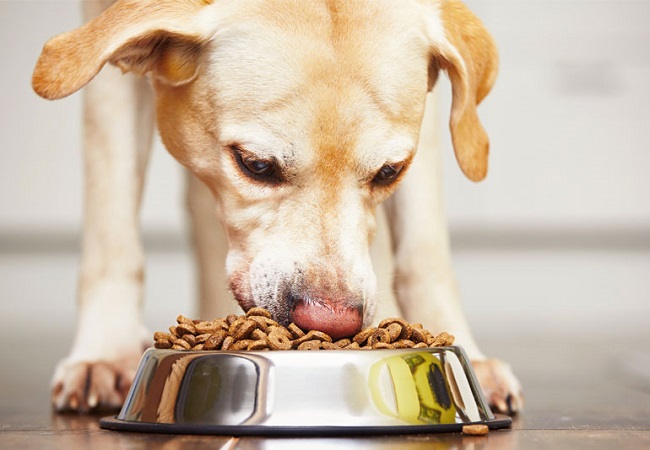
According to Statista, the U.S. Pet Food Industry has a resounding expenditure of $95.7billion.
Imagine such a huge amount of money being spent on pet meals.
This is because the parents or owners expect high-quality for their pets as it directly affects their well-being.
Almost all of us prefer getting ready-made pet food as it has an accurate amount of nutrients necessary for your dog.
But as a pet parent, the process of singling out the right type of meal for your dog falls under your umbrella of responsibilities.
Table of Contents
Types of Rendered Dog Food
There are different types of dog food varying according to the preparation, shapes, and flavors.
It is crucial to choose the one that fulfills your dog’s nutritional requirements.
1. Dry Food
Dry food, which is also known as kibble, is the most widely known dog food option as it is highly economical. As the name suggests, it is dry in nature and can be used for a long period of time. It is also beneficial in keeping your canine’s teeth healthy and strong.
2. Wet/Canned Food
Canned food is every dog’s favorite, but take note that canned food is 75% water. Due to this, the indigestible protein will pass through the dog’s digestive system without converting into absorbable nutrients. Hence, the nutritional value of wet food is comparatively less.
3. Semi-Moist Food
Semi-moist food should be avoided at all costs as it contains the least nutritional elements of all dog foods. They are generally shaped like burgers or pork chops. You can give them as occasional treats, but shouldn’t be inculcated in their regular diet.
4. Whole Meat
Some of the beneficial examples of whole meat are muscle meat with bones, organs meats, raw eggs, etc. Most of the pet owners prefer giving whole meat as they consider it to hold a higher nutritional value.
5. Meat Meal
Meat meal is acquired through a process called rendering. It breaks down the whole meat, removes the excessive moisture and fat, and turns into a powdered form.
Note: Alfalfa meal in dog food is naturally a high protein content for dogs. It helps balance overly acidic urine that could create irritation and other urinary issues in dogs.
Whole Meal VS Meat Meal
Now that you have differentiated between the different types of dog food, it is necessary to select the best one.
There has been an abundant amount of heated debate between whole meat and meat meal.
Let us end this debate right here with scientific facts.
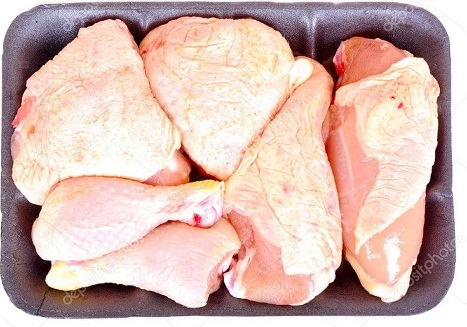
Whole meat contains around 75% water and only 20% protein. So, when you include whole meat in your dog’s diet, he/she is receiving a lesser amount of nutrients.
On the other hand, meat meal consists of 65% protein and only 10% of water.
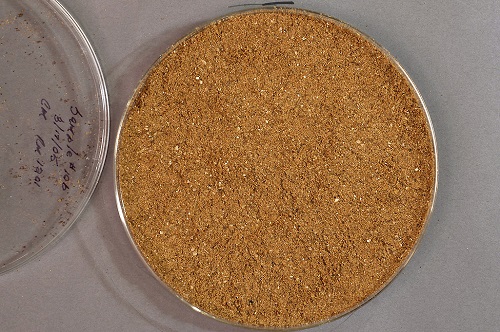
Why?
This is because meat meal is processed thoroughly through a process called rendering.
In this process, the meat is cooked at a high temperature till the excess water evaporates. This process results in a highly concentrated protein that is crucial for your dog’s overall growth.
What Is Rendering?
Have you ever had your curiosity piqued while wondering about the dead animals on the farm?
Generally, their bodies are sent to the rendering plant where they are recycled into products like pet food.
As per the book, Essential Rendering, “One-third to one-half of each animal produced for meat, milk, eggs, and
fiber is not consumed by humans. These raw materials are subjected to rendering processes resulting in many useful products.”
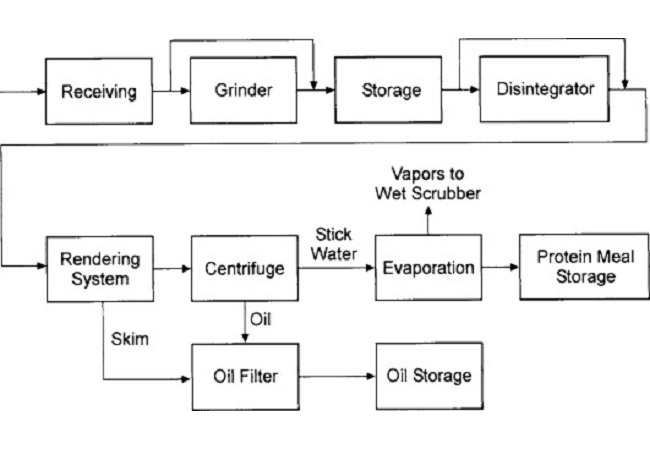
Rendering is an essential process that involves conversions of dead animals into a meal, melted fat, or water.
It uses different techniques like grinding, mixing, separating, evaporating, extracting, etc.
There are two types of rendering: for edible and inedible products. Hence, the process differs based on the type of inputs.
As it is a continuous process, the temperature needs to be maintained accurately. It is kept at 240º to 290ºF.
It starts with the melted fat being separated from the protein and bone. At this step itself, a large portion of the moisture is removed.
The fat is separated through a screw press within a closed vessel. The cracklings that are left behind contain protein, residual fat, and minerals. They are further processed by grinding and additional moisture removal. The end product i.e. meat meal is transferred to the storage facility.
Read More: Chicken Meal In Dog Food | Beef Meal In Dog Food | Lamb Meal In Dog Food
Types of Meals Produced Through Rendering
Now that you know the process of rendering, let us move on to the types of meals produced. Protein is essential for dogs and it is necessary to inculcate it to provide a balanced and nutritious diet. As meat meals have a generous amount of protein, they are preferred more by many dog parents.
1. Chicken Meal
Chicken meal is the dry form of chicken. It is filled with the necessary nutrients and highly affordable like Hill’s Science Diet Dry Dog Food, Chicken Meal & Barley Recipe. Basically, it is obtained when fresh chicken is cooked at a very high temperature. As this process removes all the excess moisture, the end-result has a highly concentrated amount of protein.
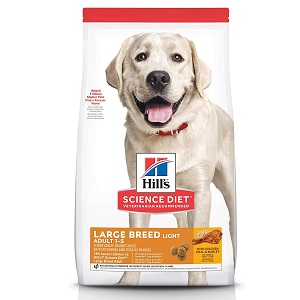
2. Beef Meals
Beef meals are the most common source of proteins for dogs. Not only are they abundantly nutritious but your dog will also love the taste. However, they are a bit expensive than chicken meals. Yet, there are some affordable options like Sportmix Caninex Beef Meal And Vegetables Grain-Free Dry Dog Food.
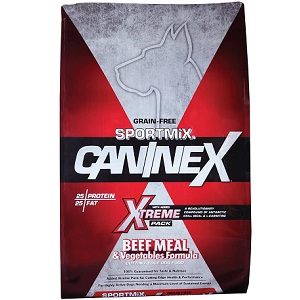
3. Turkey Meals
Turkeys are similar to chicken meals in terms of nutritional ingredients but they contain less fat. They are also slightly expensive, but if you wish to get an economical option, we suggest you go with Flourish Pets Dog Food, Chicken and Turkey Meal Formula.
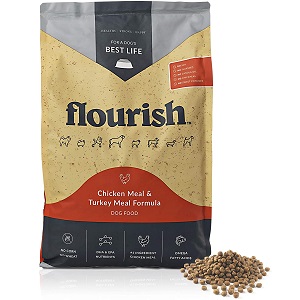
4. Lamb Meals
As lamb has high water content, it has a low caloric density. But as it is leaner than the other major meats, it has more amount of protein. Lamb meals like, Nature’s Recipe Lamb Meal & Rice Recipe are rich in protein, calcium, and phosphorus that are necessary for a dog’s growth.
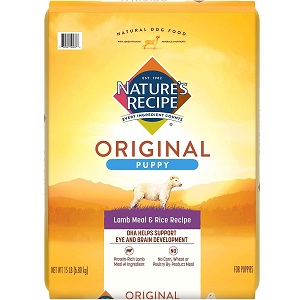
5. Salmon Meals
Salmon provides more amount of fat than protein. But it contains Omega-3s that helps in reducing the inflammation in your canine. As raw salmon is dangerous for dogs, salmon meals like Zignature Dry Dog Food – Trout and Salmon Meal Formula are preferred.
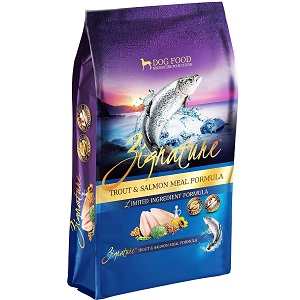
6. Pork Meals
Not only are pork meals highly affordable like the ENTRUST Adult Pork Meal & Barley Recipe, but also loved by dogs due to the flavor and density. Even though they contain more amount of fat than beef or chicken, the protein factor is the same.
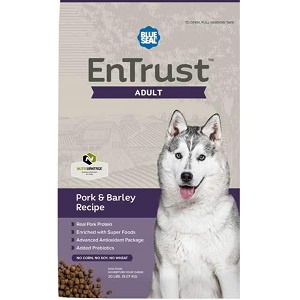
7. Duck Meals
If you have a picky dog, duck meals like Lucy Pet Formulas for Life – Duck, Pumpkin, and Quinoa is the best possible option. It contains more fat than other poultry or fish and a comparatively low amount of protein.
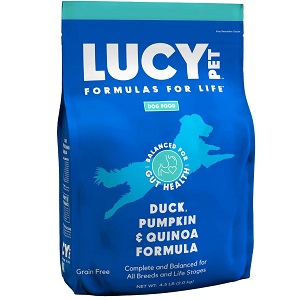
8. Venison Meals
Venison meals like Canidae PURE Lamb, Goat, and Venison Meals are an essential source of zinc, phosphorous, and iron. Not only is it extremely palatable for dogs, but also helps in maintaining energy levels. It is an ideal option for dogs who are suffering from food sensitives.
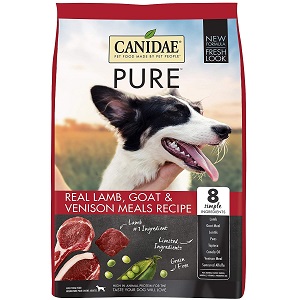
Animal By-Product: Good or Bad?
Pet parents have a negative connotation regarding animal by-products. Most of the information available is based on baseless assumptions and myths. Therefore, people have associated animal by-products with something gross or foul. But the reality is far, far away from it.
Animal by-products comprise organ meats like liver, lungs, feet, brains, undeveloped eggs, kidneys, etc. Basically, they are products that are not suitable for human consumption.
“So what isn’t okay for humans is good for dogs?”
Yes exactly, because that is their first choice. These by-products provide a balanced amount of nutrients. According to the Pet Nutrition Alliance, “by-products are used in pet foods because they are excellent sources of protein and other nutrients.”
Contrary to the popular belief, by-products are not the wasteful remains of a road-kill animal. They are also believed to have arrived from a diseased animal.
But the AAFCO has clearly stated that “Meat by-products are the non-rendered, clean parts, other than meat, derived from slaughtered mammals. It includes, but is not limited to, lungs, spleen, kidneys, brain, livers, blood, bone, partially de-fatted low-temperature fatty tissue, and stomachs and intestines freed of their contents. It does not include hair, horns, teeth, and hoofs. Likewise, it shall be suitable for use in animal feed. If it bears a name descriptive of its kind, it must correspond thereto.”
Hence, it is safe to say that animal by-products can be included in dog meals.
Do you know? Salmon meal In dog food is the best source of proteins rich meal for dogs. It consists of omega-3 fatty acids and supports your dog’s immune system.
Note: While buying the meals, keep a check on the ingredients. It should be stated as “Chicken by-product meal, or beef by-product meal.” It shouldn’t have a generic name like “meat by-product meal” as it could contain diseased livestock or euthanized pets.
Non-Meaty Meals For Your Dogs
With the increasing trend of veganism, more and more pet parents are trying to provide a vegetarian meal to their dogs. It is a common assumption that vegetarian meals can lead to protein deficiency. But several dog meals are rich in nutrients, including protein.
1. Corn Gluten Meal
Corn gluten meal is a by-product of processed corn. It is used as a protein source and unlike the name, it doesn’t contain any gluten. As it is a plant-based protein, and dogs are omnivores in nature, they can digest it without any hassle.
2. Canola Meal
Although it is a controversial ingredient in pet food, it is rich in fat that is vital for the major bodily function of dogs.
3. Alfalfa Meals
Although alfalfa is a relevant source of protein. It should not be considered as the primary source. It contains phytoestrogens that are responsible for endocrine disruptions and thyroid function. Thus, it is best to give alfalfa meals in small proportions.
Read More: Corn Gluten Meal In Dog Food | Canola Meal in Dog Food | Turkey Meal In Dog Food
Which Nutrients Are Necessary For My Dog?
Before we head onto the best types of meals for dogs, it is imperative to know about the required nutrients. Your canine best friend needs a well-balanced diet to lead a healthy life.
While buying your dog meal or food, keep a close eye on the labels. There are certain guidelines or nutritional requirements set by the American Association of Feed Controls Officials (AAFCO). Look out for such a mention on the dog food company labels.
The following nutrients should be included in your preferred dog food:
1. Proteins
Amino acids are the building blocks of protein. As dogs are only capable of producing some amino acids on their own, they have to rely on external factors for the reminder ones. So, it is necessary to have a crucial amount of protein in your dog food.
2. Fats
Dogs are incapable of building enough essential fatty acids on their own. Hence, ideal dog foods should have linoleic acid, Omega-3, and Omega-6.
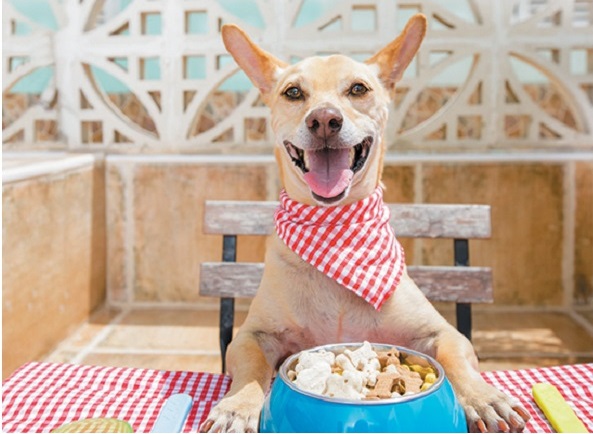
3. Carbohydrates
As dogs are omnivores in nature, they do not face any issue in digesting carbohydrates. In fact, they are essential elements that will help in increasing the energy levels of your canine pets. Along with that, it also helps in keeping their intestines healthy.
4. Vitamines & Minerals
Vitamins and minerals are crucial for building bones and keeping them strong. Vitamins like Vitamin A, D, E, K, B-complex vitamins, calcium, phosphorus are necessary. As dogs are capable of producing vitamin c in their body, they do not need it in their diet.
If you feel that your dog is not getting enough vitamins, you can always opt for supplements. However, it isn’t fully encouraged to be used daily.
FAQs About the Rendered Ingredients In Dog Food
What is rendered dog food?
Rendered dog food is obtained after the process of rendering. It is a method where the raw animal material is processed to remove the moisture and fat. The raw meat is cooked at a very high temperature and the end-product obtained is rich in protein.
What is considered to be the main ingredient in dog food?
The first and foremost ingredient in dog foods should be a source of protein. It can be meat, fish, etc. Dogs are omnivorous in nature, and protein is crucial for them. Hence, the main ingredient should always be meat that is rich in protein.
Which ingredients should not be in dog food?
Ingredients like:
1. Melamine,
2. Carrageenan,
3. Food dyes,
4. BHA and BHT,
5. Ethoxyquin
…should be avoided at all costs. Keep an eye on the dog food label and if they contain any of the aforementioned components, it is best to skip it.
Can they put dead dogs in dog food?
As meat can come from any animal, it is our duty to check the ingredient list of dog food. Go for the dog foods that have mentioned specific names like beef-meal, chicken-meal. Such foods do not use roadkill or diseased animals.
Is there horse meat in dog food?
Horse meat was inculcated as a primary ingredient in dog food till the 1940s. Post that, major pet food industries eliminated it from their food items.
Wrapping Up
The health of our canine best friends depends on our decisions. Even a single incorrect decision can lead to drastic consequences. Thus, it is essential, as responsible pet parents, to provide the best of the best. This can be done by understanding the structure of the dog food.
We hope that you have a better understanding of the different types of meals and what is good and what is not. Take a wise decision and find a perfect balance between quality and price.
You can also read about why people use ash in dog food. Check it out here.
Also Read:
References:
- Rendering (animal products) – Wikipedia
- The truth about pet foods and rendering – PetMD
- Meeker, David L. Essential Rendering: All About The Animal By-Products Industry
- Rendered Products In Pet Food – DogsNaturallyMagazine
- Trends emerging in pet food labeling lawsuits – PetFoodProcessing.Net
When things come crashing down, Tiffany comes to the rescue! As a veterinary medicine graduate, she is the brain behind the in-depth analysis of the products. As an avid dog lover, she is earnestly driven to find the finest options. Any article on DogNeedsBest that has to do anything with your pet’s health goes under scrutiny before getting published.


